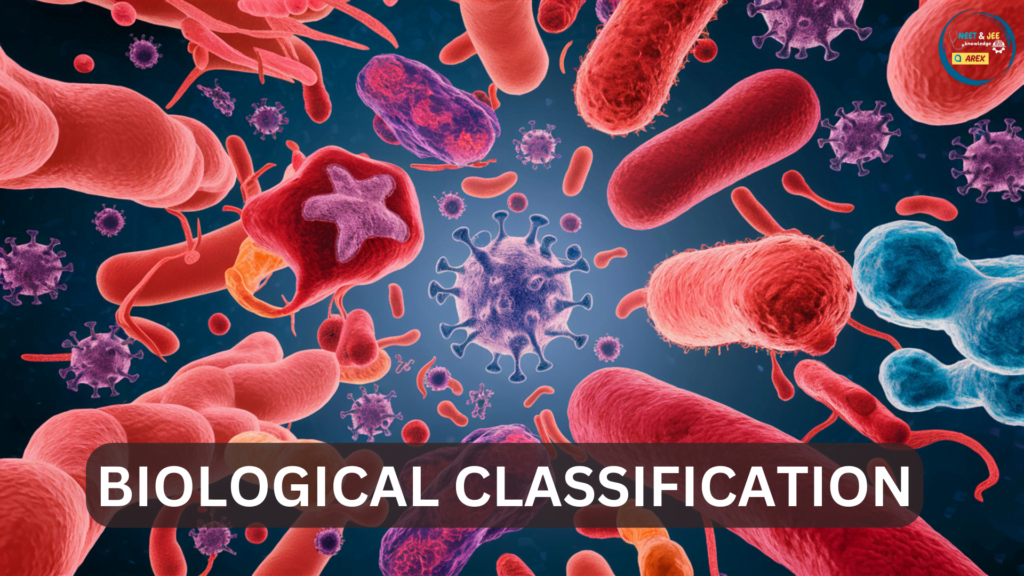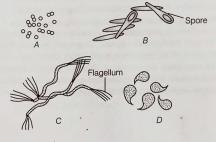
Biological Classification MCQ for NEET
R.H. Whittaker suggested a five-kingdom categorization in 1969. Monera, Protista, Fungi, Plantae and Animalia are the kingdoms he selected. His main classification criteria were body organisation, reproduction, manner of nutrition, cell structure and evolutionary relationships.
A six-kingdom categorization based on the division of the Kingdom Monera into two domains with the other eukaryotic kingdoms remaining in the third domain has also been proposed as a way to categorise eukaryotic kingdoms.
| NEET 2025 Exam Important Links | |
|---|---|
| NEET 2025 Updated Syllabus | NEET Eligibility Criteria 2025 |
| Biology Preparation | Chemistry NEET Preparation |
| NEET Preparation tips for 2025 | NEET Result 2024 |
Biological Classification MCQ for NEET
This categorization serves as the foundation for all biological research and facilitates the grouping of related species. As a result, the study becomes less difficult and it is possible to investigate creatures that have comparable traits together.
In this article, we will cover some Multiple choice questions on the topic of Biological classification which is important for the NEET examination.
MCQs
This system of classification was given by Carolus Linnaeus in the book Systema Naturae (1735).
Out of which four kingdoms, i.e. Protista, Fungi, Plantae and Animalia contain eukaryotes.

A represents spherical-shaped bacteria generally called as cocci.
B represents the rod-shaped bacteria generally called as bacilli.
C represents the spiral-shaped bacteria (with flagella ranging from one to multiple) generally called as spirilla.
D represents the comma-shaped bacteria called as vibrio.
Identify the type of bacteria.
Archaebacteria have a unique cell wall structure and composition which is responsible for their survival in such extreme conditions. Thus, the type of bacteria which corresponds to the features given is archaebacteria.
Enhance your preparation with Arexiq’s Mock Test Series where we provide solutions to various MCQs like we provide in this post “Biological Classification MCQ”. Our expert teachers explain the concepts thoroughly, making it easy for you to understand. We offer many types of questions ensuring a clear grasp of concepts.
FAQ's
- What is Biological Classification?
Answer. Biological classification is the process of grouping organisms based on their similarities and differences. This helps in the systematic study and identification of organisms.
- Who is the father of modern taxonomy?
Answer. Carl Linnaeus is known as the father of modern taxonomy. He introduced the binomial nomenclature system for naming organisms.
- What are the major taxonomic ranks in biological classification?
Answer. The major taxonomic ranks are Domain, Kingdom, Phylum, Class, Order, Family, Genus and Species.
- What are the five kingdoms proposed by Robert Whittaker?
Answer. The five kingdoms are Monera, Protista, Fungi, Plantae and Animalia.
- What is the three-domain system?
Answer. The three-domain system, proposed by Carl Woese, classifies life into Archaea, Bacteria and Eukarya, based on genetic and molecular differences.


